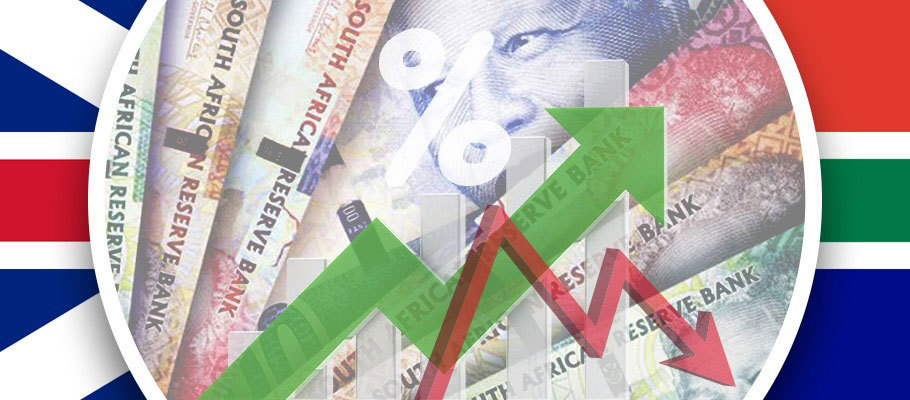
Published: November 16th, 2022
The Sterling to Rand rate has bounced back from steep September losses this week. The reversal has stalled near the pair’s 2022 highs, but analysts believe a correction is in the offing if the Greenback stays on the back foot or the Pound is impacted negatively by this week’s coming Bank of England (BoE) announcement on interest rates.
ZAR was one of the G20 grouping’s worst performers in October while the Pound was near the top. The net effect of that divergence has been a 12 per cent rally from lows seen in late September, erasing most of 2022’s earlier losses for the GBP/ZAR pair in the process.
The period of underperformance for Rand happened during another strong month for the US Dollar and a period of abnormal weakness for China's Renminbi. Rand’s descent may have also been aggravated by domestic data that showed manufacturing to be the only sector bright spot in an otherwise slowing South African economy.
Analysts say the real drivers behind GBP/ZAR price action have been the Sterling recovery and Dollar rally, both of which had stalled over the past two days.
An analyst note from RBC Capital Markets said that GBP/ZAR typically correlates to USD/ZAR, meaning it could benefit if the latter hits new highs in the weeks ahead. The Dollar outlook for the remainder of 2022 will hinge on how investors interpret announcements coming put of this week's meeting by the Federal Reserve.
‘Without updated forecasts for guidance, the Fed’s comment on the economy is likely to be nuanced, with investors looking for signals that a more dovish approach to rates is in the offing. That sort of scenario could give USD/ZAR space for relief, and an environment conducive to long positions.’
While USD exchange rates have been on the rise for much of 2022, speculation in late October about a potentially 'dovish' turn in Fed policy led to widespread dollar selling. Any resurgence in USD selling over the coming days cloud leave the pair ‘teetering on the edge,’ RBC says.
While ZAR has fallen back in recent months, it can offer surprises. In late June, rosier-than-expected economic data saw the Rand notch up significant gains over most of its emerging market peers, returning it to positive territory and even briefly topping the G20 league table.
In a note to investors, currency analysts at Investec wrote that 'the upbeat GDP figures for the first quarter of 2022 have piled on more pressure for higher South African interest rates. A 50 basis-points hike at the SARB’s July policy meeting appears more likely now than a 25 basis-points rise’.
Investec also said that ZAR had benefited this year from rising global commodity prices. When blended with a stable domestic economy, the two factors have combined to give offshore investors healthy returns. They did warn, however, that higher oil prices would keep the Rand under pressure, particularly if subsequent economic data showed slowing GDP growth.
‘ZAR has benefitted from a large trade and current account surplus over the past two years. It’s possible that could shrink or even reverse in the coming quarters.’
The bank said Rand had appreciated in value by 6.2 per cent for the year-to-date against the currencies of its largest trading partners. Those gains also caught some investors off guard since ZAR is considered a 'high beta' currency that tends to depreciate when geopolitical anxiety (e.g. the Ukraine war) rises.
Investors have certainly been unsettled by Russia's ongoing military action, however Rand has attracted support due to rising demand for alternative sources of raw materials, boosting its commodity exports.
Investec wrote that a surge in metal prices has been a key driver for Rand across Q1, as worries about sanctions on Russian commodity exports push prices up amid fears about lack of supply.
Other antipodean commodity currencies like the Australian (AUD) and New Zealand (NZD) dollars have also benefitted. Like Rand, they tend to depreciate when global investors get market jitters. All are attracting new levels of support thanks to the extended bout of geopolitical and supply chain disruption.
Recent figures from The Institute of International Finance’s (IIF) database shows that foreign investors have been selling off their emerging market positions since the Ukraine conflict began. However South Africa has been largely immune to the effect, with equity markets actually seeing a net inflow of foreign money.
Commerzbank analysts say South Africa has been attractive to investors looking to sustain some emerging markets exposure thanks to its relative economic stability, deep financial markets, and affordable market valuations.
Central bank policy from the SARB has also been Rand supportive, with steady interest rate hikes in line with growth figures and rising returns on assets like Rand-backed bonds.
The SARB raised the interest rate for a second time in January to four per cent. However, money markets are currently pricing in repo rate rises totalling 100 basis points by the Autumn.
The bank notes that such expectations could turn out to be overheated, with the potebtial risk that some will see losses if fewer hikes actually come to fruition.
Investec analysts also flagged the potential downside risks, adding that global risk appetite is likely to remain fragile until the Ukraine crisis ends. Investors will be expected to balance their portfolios in response to rising inflation, supply chain problems, and rising interest rates as well. A flight to safety could scupper even the most caveated forecasts.
'The turmoil and unexpected knock-on effects caused by sanctions on Russia have stoked risk-off sentiment in Q1 and the trend will likely persist, if not intensify. That blurs the outlook for global growth. The rate-raising path currently being followed by the by the US Fed will also test risk appetites through the second half of 2022’.